Today we are looking at the HP T740 Thin Client but in a perhaps different light. This is a direct request from our readers, specifically WANg on our forums. The T740 is designed as a thin client, or an endpoint to connect a keyboard, mouse, and monitor and access a remote desktop. The STH community, for years, has been using these systems as small servers and we even did a 2018 piece on a predecessor the HP T620 Plus Thin Client we turned into a firewall VPN appliance. Now with a newer generation, we see a massive upgrade.
Project TinyMiniMicro Background
In Project TinyMiniMicro we are purchasing a large number of small form factor devices from different sources. While a standard STH review is of a new product, these TMM nodes occasionally have specs that differ from what one would expect. In all of these pieces, we are going to talk about what makes the nodes unique. We are now well over 35 different nodes to increase diversity. We are testing these on a more circular economy/ extended lifecycle basis to see how they can be deployed after their initial use as corporate desktops. As always, we have a video version of this article.
We recommend opening this video in a YouTube tab/ app for a better viewing experience.
For $278 (via a STH forum deal) we got a HP T740 thin client. The system has a AMD Ryzen V1756B, 8GB of RAM, and 16GB of storage. The specs were not overwhelming, but this was also a relatively inexpensive node.
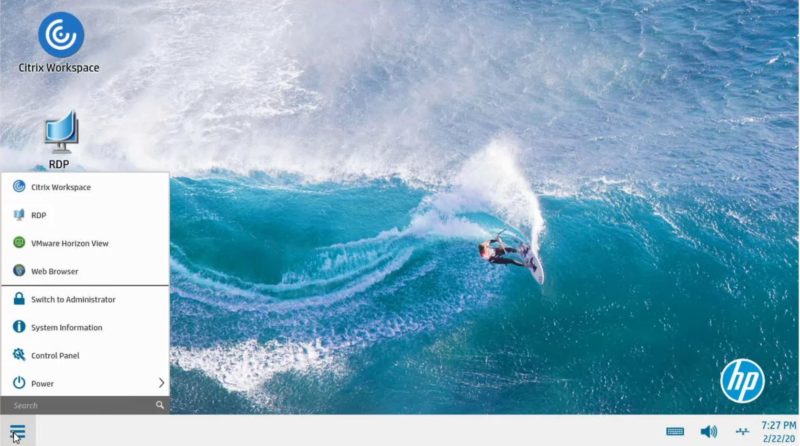
Instead of Windows 10 Pro or Windows 11 Pro that we normally see on the Lenovo ThinkCentre/ ThinkStation Tiny, HP EliteDesk/ ProDesk Mini, or Dell OptiPlex Micro units, we get HP ThinPro. This is a barebones OS that is really designed for thin clients. Conceptually, the T740, even though it is much larger than the 1L PC segment, is designed to use some sort of Microsoft, Citrix, or VMware remote desktop solution. There is a Windows 10 IoT option as well, but we did not have that. What makes this interesting is that unlike older thin client PCs that used anemic processors this system has a fairly capable quad-core, eight-thread AMD Ryzen CPU.
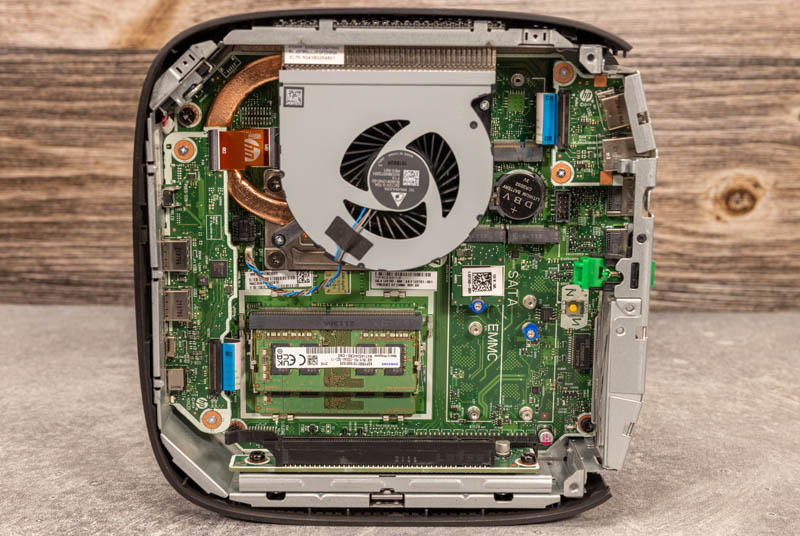
While this is technically not a TinyMiniMicro node, as one can see it is much larger, it is also a unit that fills a gap not too different from those nodes so we are going to do this piece in the spirit of that series.
HP T740 External Hardware Overview
Let us get to the obvious first, and that is size. This is considerably larger than the ~1L TinyMiniMicro (Lenovo, HP, Dell) segment. At 50m x 210mm x 210mm it is closer to 2.2L in displacement. Still, it is relatively compact.
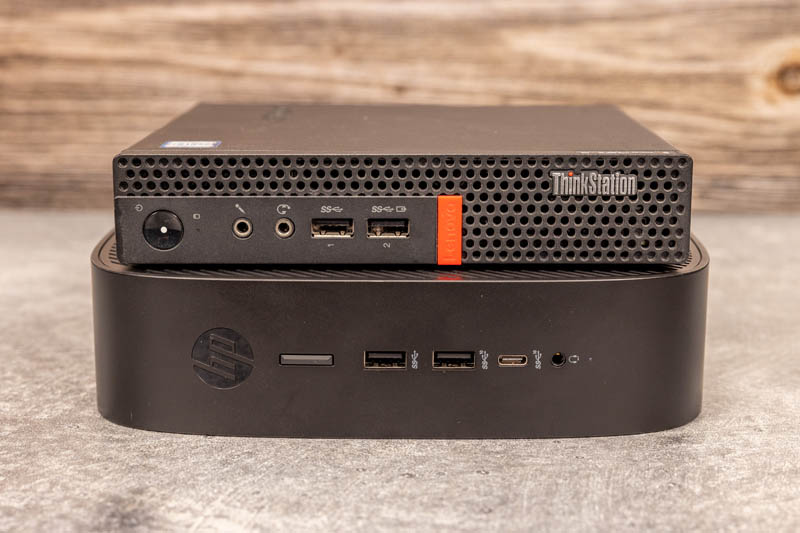
On the front of the system, we have a surprisingly robust I/O panel. There is a power button on one end and a combo headset jack on the other. In the middle, we get a USB 3.1 Gen1 5Gbps Type-A port (sorry about USB naming). Then there is a USB 3.1 Gen2 10Gbps Type-A port. Finally, we get a USB 3.1 Gen2 Type-C port.
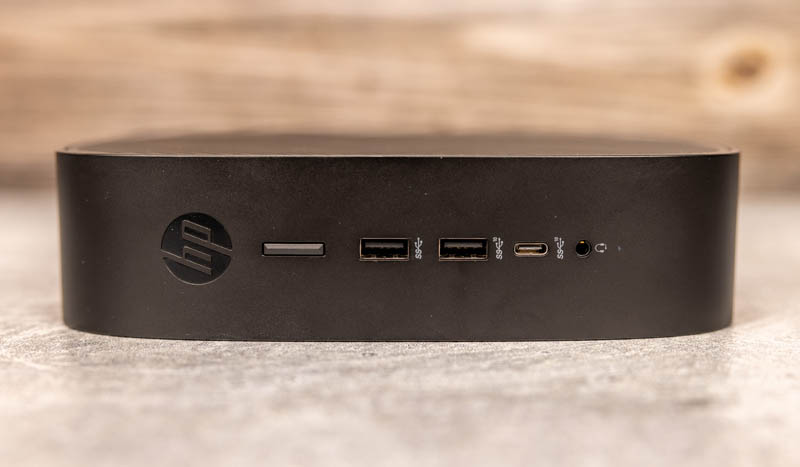
Moving to the rear of the unit, we have a lock port, a power input port. We then have a Realtek RTL8111 NIC port. Along the bottom there are four DisplayPort outputs. Finally, we have two USB 3.1 Gen1 and two USB 2.0 Type-A ports.
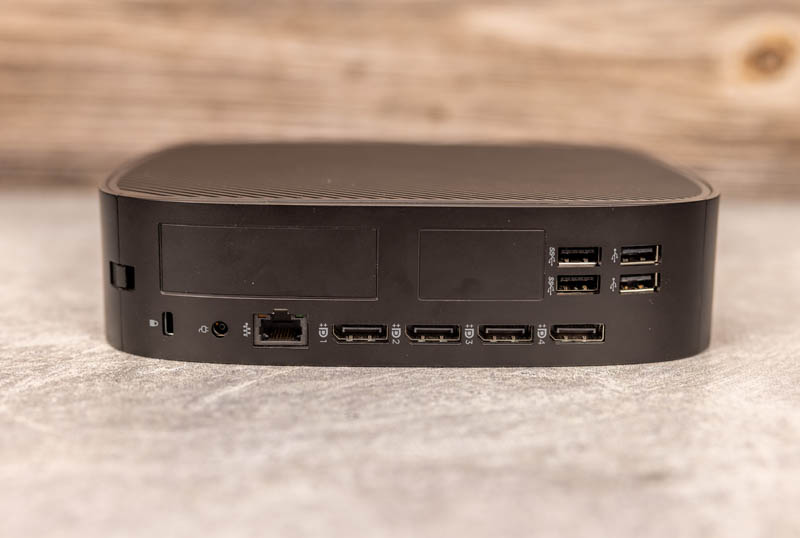
In the event you are wondering what those blanking spots are, they are important for this review. Specifically, the middle and smaller of these is for optional wireless antenna mounting, serial console port mounting, and so forth. HP has a wide variety of options here, even including 100M and 1G fiber NICs.
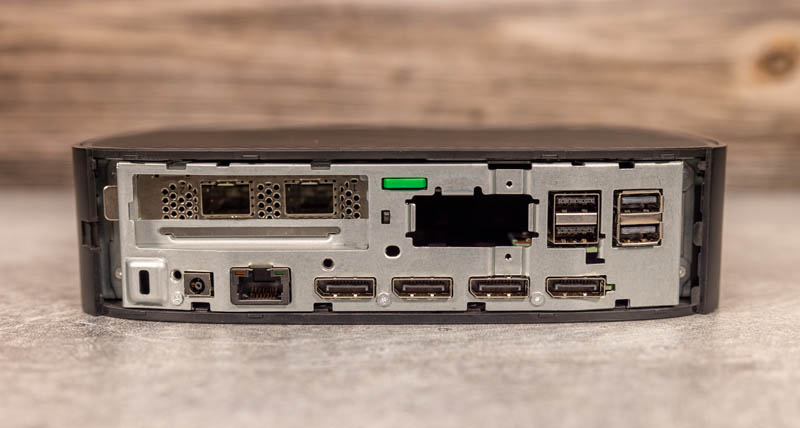
The left side is more interesting. This is a standard low-profile slot. Here we have a NVIDIA Mellanox ConnectX-4 Lx dual 25GbE NIC standing in as the model. We would actually suggest lower-power cards, ideally sub 10W like the Intel i350-T2 and i350-T4 and even the Intel X710-T2L. We tried a 100GbE NIC and that ran into thermal challenges. Still, we are just using that NIC to show what adding a NIC looks like here. This is the view with the faceplate back on and the blank removed:
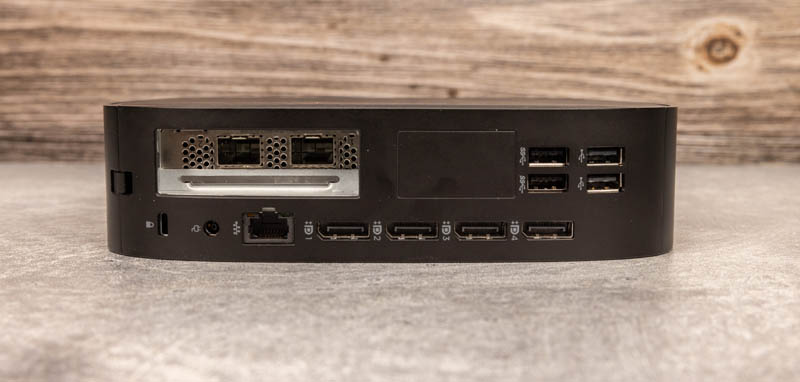
Something that may not be obvious is that the bottom of the chassis has a removable panel where one can find the stickers for regulatory and tracking. This also has mounting points for VESA or other mounting options.
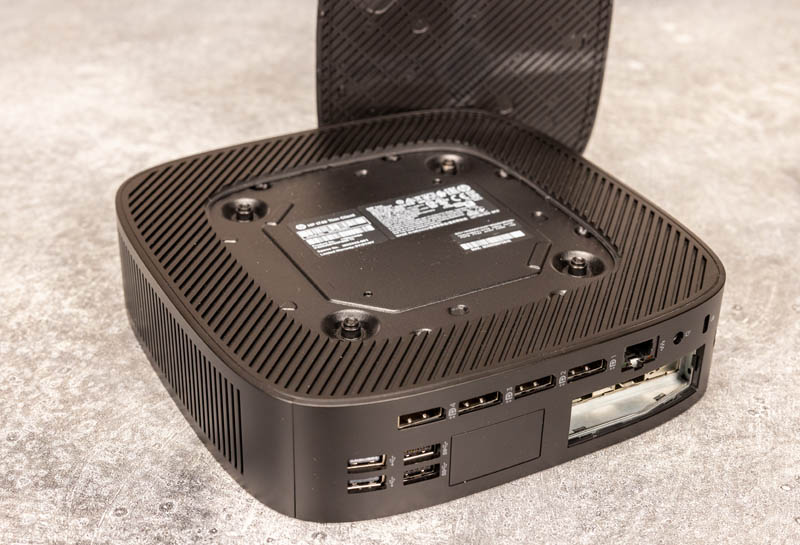
Next, we are going to get to our internal overview.

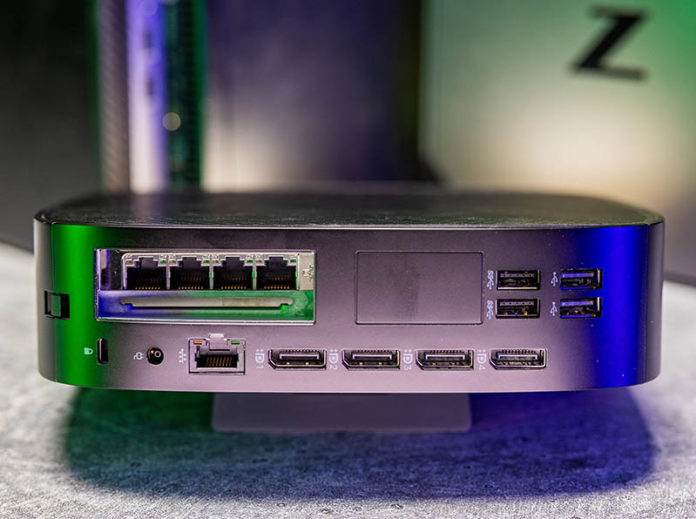
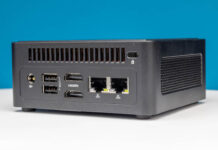
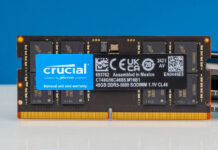
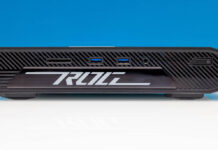
Thanks for this. Been looking for a thin client with PCIE capability (and up-to-date hardware) for robotics applications for a while. This fits the bill perfectly.
My biggest gripe with the most of the NUCs or 1L units has been the lack of PCIe slots. This is a pretty nice little package, even at 2.2L. Nice review, absolutely love this series and its tangents.
I wonder what the exact target market for these things was. I assume that HP had one in mind; but anywhere I’ve worked “people we stick on thin clients” and “people who need 4 monitors” were largely disjoint groups.
HP’s t740 QuickSpecs PDF says it supports DASH OoB management. Anyone try this? (Maybe I missed it in review…)
Any idea whether ECC RAM is supported? I think the V1756B is capable… but can’t tell whether the t740 is.
> I wonder what the exact target market for these things was. I assume that HP had one in mind; but anywhere I’ve worked “people we stick on thin clients” and “people who need 4 monitors” were largely disjoint groups.
In my head the target market are engineering, cad, design and such which use this as a “thin” client to access much more high performance set ups. Or maybe this thing as a daytrader or similiar information brokerage needer?
Does anything other than Lenovo Tinys (an THIS) have PCI-e expansions? Specifically for additional ethernet NIC
I have got this.
32GB ram, 128GB + 1TB ssd, intel i350 4 port card, esxi test host, pfsense, unifi controller, windows 10 test machine.
Excellent choice, i bought it before the prices has been increased.
I tried with 4X10gbe card, the lan card required active cooling.
I bought a T640 (fanless, unlike T740) to use as a silent desktop to use when all I’m doing is browsing or watching videos. But then I found that it has some bad coil whine, depending on what power brick I use.
Speaking of DASH management, I tried it on my T640, and apparently it’s an implementation that lacks IP-KVM. According to some PDF, the Elite desktops have KVM, but the T640 does not.
Even weirder, the serial over LAN didn’t seem to work, and attempting to put the Linux console on one of the Realtek DASH serial ports resulted in some bizarre hangs where the OS went comatose. It’s as if any attempt to write to the FIFO never returned!
I don’t have one to check, but it wouldn’t surprise me if DASH on the T740 is broken just like on the T640.
Re: Damian
I use Dell Wyse 5070 Extended Thin Client (https://www.dell.com/support/manuals/en-us/wyse-5070-thin-client/5070_extd_ug/welcome-to-dell-wyse-5070-extended-thin-client).
It may come with discrete AMD graphics in PCIe slot – I replaced it with Intel Dual 1GbE card.
It serves very well as pfSense box :)
Krysiek – We now have one with a GPU in the studio.
I tried this with a HP T730 and it worked well. The T740 is still a currently sold HP product and the prices are still high. The T730 is older and can still be found for under $150 on ebay.
Loved the HP T740 after seeing the STH review on YouTube so I got one but mine came with an Admin password in the BIOS that has so far proven impossible to remove, I’ve reset the password jumper, pressed the Clear CMOS button on the motherboard, even removed the CMOS battery but the password is still there. Does the BIOS come locked like that from HP? Its preventing me from turning on hardware virtualization, changing the boot options or even allocating more RAM to the graphics.
@Alex
I am also curious about that. I’m looking to purchase one on ebay but they say it has a BIOS password that they weren’t able to clear. Is there a way to clear ALL passwords on this?? Even the Startup Password??
I wonder what the noise level is, as a cheap 10gbe nvme NAS
Do you guys at STH think you may have any sway to get HP to fix an issue with the BIOS of this T740 Thin Client? I bought it based on your review here and am mostly happy with it. However, the setting in the BIOS for “Fan Idle Mode” does not work. I documented it here:
https://forums.servethehome.com/index.php?threads/hp-t740-fan-control-not-working.38021/
I contacted HP and they want me to send the unit in for repair. I’m sure this is not a repair issue and a BIOS issue especially since the fan works perfectly and does spin up faster when the CPU heats up. Sending the unit to HP would be pointless. Thanks for any help!
Sadly Craig, we are not going to get you anything better than HP support for this type of request. We do not know the HP support folks well.
Thanks Patrick. When I called HP, they told me that if I had ten or more units than they would look into it, but not for one :-(